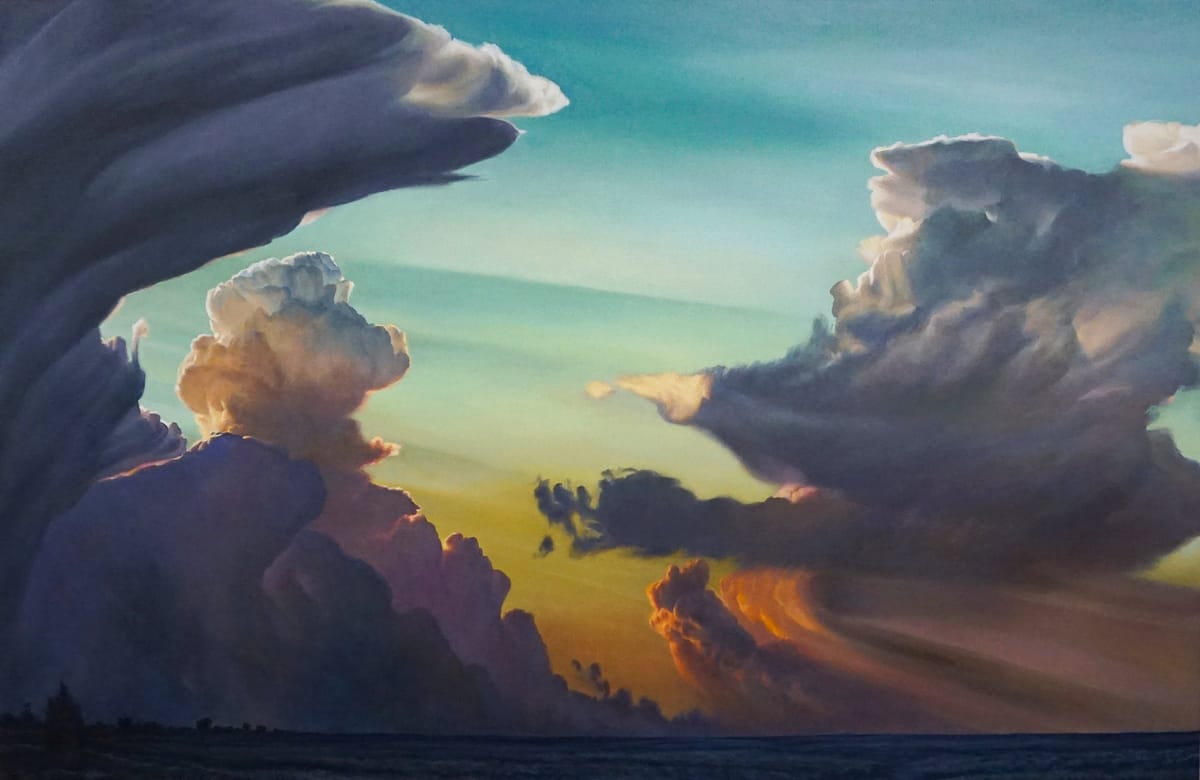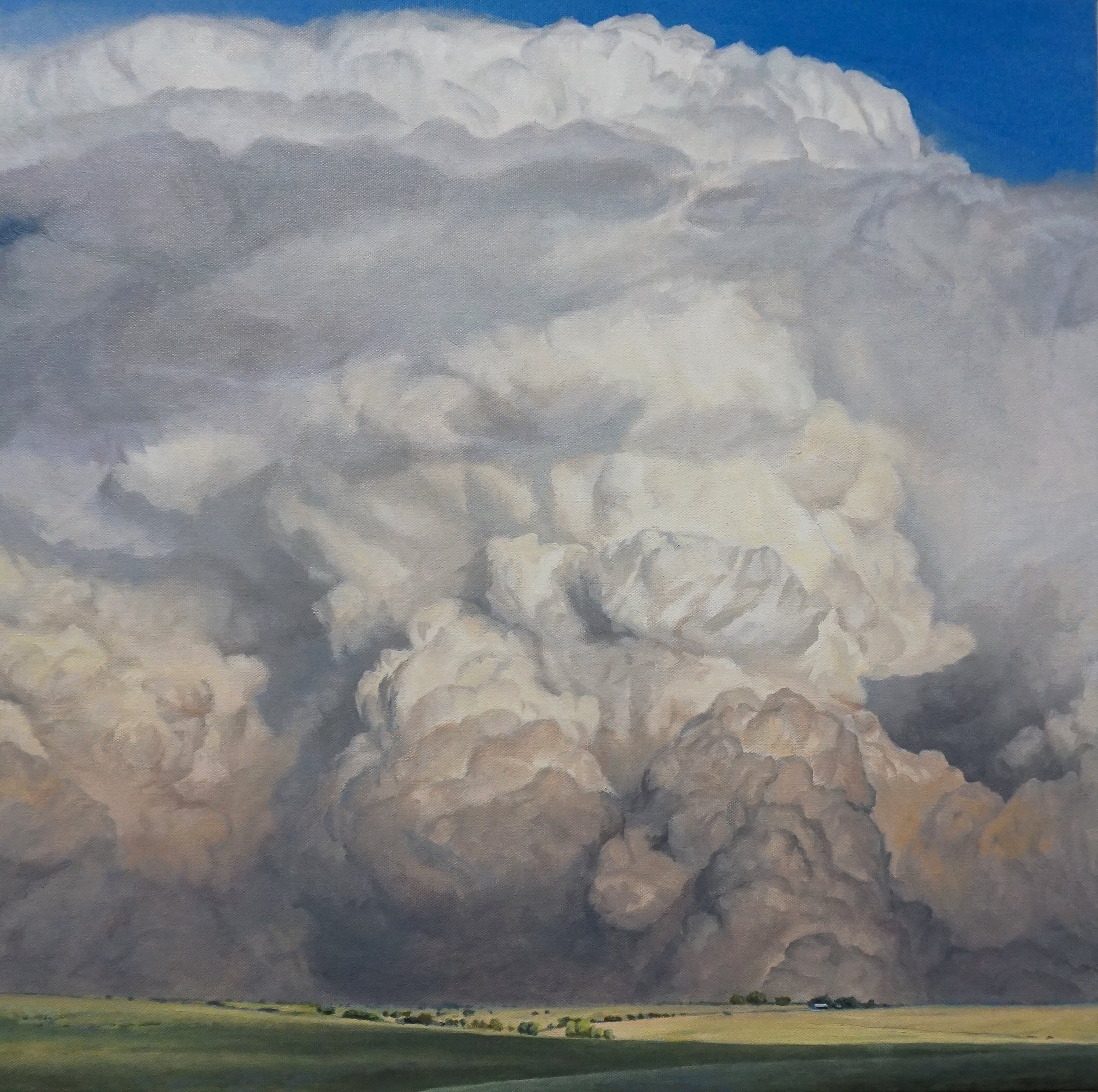
Oklahoma City-based painter David Holland, born into an army family, had lived in Oklahoma, Kansas, Okinawa Japan, Idaho, Maryland, and Arkansas by the time he graduated from high school. When he was seven, his mother enrolled him in an art class that sparked his interest in creating art, while his family’s travels exposed him to a broad range of people and communities. Always the outsider, he became an observer of everything around him.
As an adult, trips to Europe spent touring countless art museums underscored his sense of the infinite variety, value and longevity of art. Photographs taken while in those museums led to one of his series he calls the “Torso Series” where he depicts ancient broken Roman marble torsos in vivid colors. In March of 2010 in his hometown of Lawton, Oklahoma, he exhibited 35 pieces of his series “Modern Life,” at the Leslie Powell Foundation and Gallery. Not satisfied with the financial results of that exhibition and harnessing his desire to be a full time artist, he embarked on his current, highly-collected series of cloudscapes. With the Christmas gift of a complete set of oil painting supplies, his new series featured oil paintings of the mercurial essence of clouds and storms in vivid color and detail.
We recently caught up with Holland for this conversation.
When and how did your interest in art begin?
The first time I can remember being proud of a piece of art I’d made was the 4th grade. It was called “Yuccas and Things,” a pencil drawing of a desert scene from pictures in an encyclopedia. I think my mom at some point found some paint by numbers 8x10s at the PX for me and I remember loving the colors in those little cups. One picture of a deer in the woods turned out really nice and put the little painting up on my bedroom wall. I’ve always loved making things. I think those feelings of accomplishment and satisfaction after hours of concentrated work started things.
Tell us about the creative process, what is the part that you enjoy the most?
In my work I try to match, as closely as possible, the real color I see when I witness a storm, so I enjoy that mental challenge of mixing the perfect colors, but the part I enjoy the most, I’d have to say, is when I have my brush on the canvas and my mind is totally engaged with my source cloud and I’m smearing in some great color that really makes some part of the painting pop into place for me.
Your work is a beautiful marriage of technology, with the cameras you use to photograph the storm and clouds, and paint. How has your work evolved throughout the years? Where do you see it going?
I’ve always loved watching clouds, particularly storms, which led to taking pics of them…
As long as my camera is fully charged I can take hundreds of pics of a single storm over the course of its development. A logical next step for me is to become adept at capturing time lapse images that show that development and using those for large scale immersive video installations…Where and when, who knows?
The dynamic tension of a well-executed thunderstorm painting was all I was after when I started painting storms back in 2009. Usually those pieces had a simple dark horizon line with little to no detail. When I showed those pieces to people, almost to a person they said they’d like something to give them the perspective of how big the storm is, so over the years I’ve developed landscapes to add to the foregrounds of my pieces. I look for landscapes that are evocative but that don’t compete with the grandeur of the sky.

What is the best time of year to capture sky images for the work you do?
In Oklahoma it’s pretty much nine months out of the year because you never know when you’ll have the right mix of atmospheric conditions to form clouds or storms that are photogenic. We get fronts coming through in all seasons, except winter, that can produce a good thunderhead.
My ideal setup is when a front storms through and is east of the city and the sun is behind me, about an hour before sunset with no obstruction illuminating the storm, bringing out all the shapes and structures within the line of storms.That would be an evening I’d probably take 400 pictures or more as the line played out through the setting of the sun and into dusk.
Tell us about the connection you develop through your work with nature and how meaningful that is to you.
It’s hard to describe the feeling I get when I’m standing in front of a mind bogglingly beautiful storm that the sun is catching perfectly. I know it’s trite to say, but my heart does race and my breathing gets rapid. It’s like I can’t really believe this is happening and that I am lucky enough to watch it happening.

Who are some of the people that have had the biggest influence on your work?
My mother, who's always been right behind me, never critical, always supportive.
This is an incredibly long list that includes two worlds. One of friends/family and one of the art world itself. My father was convinced by my mother that I had some talent and then he and I traveled to three different cities to sell my work at festivals. In doing so he saw my commitment to my work and its effect on people first hand and consequently he became a huge supporter.
And my partner, John, who for 44 years has been through the whole journey, encouraging me and keeping my feet on the ground.
What does art mean to you?
A purpose. A living. A reason to get up in the morning and face this kooky world we live in and work at the challenge of creating something from nothing. I’ll use part of the question in the answer. It gives my life meaning.

